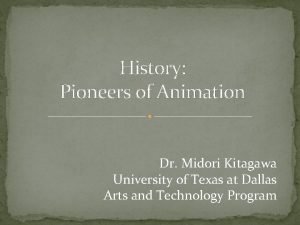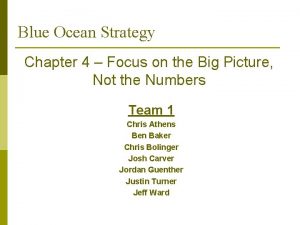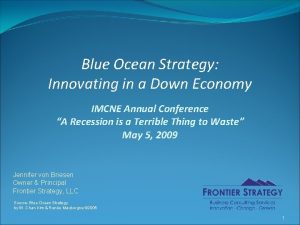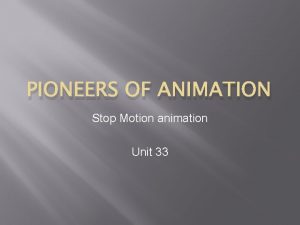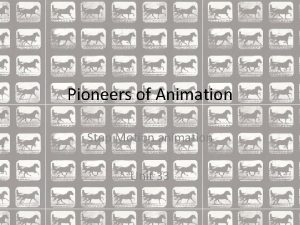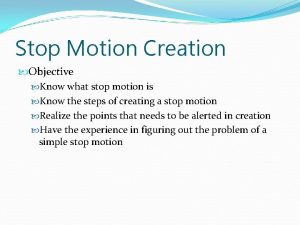PIONEERS OF ANIMATION Stop Motion animation Unit 33








- Slides: 8

PIONEERS OF ANIMATION Stop Motion animation Unit 33

JOSEPH PLATEAU The Phenakitoscope was made ion 1832 by Joseph Plateau (14 October 1801 – 15 September 1883) was a physicist who lived in Luxembourg. He was the first person to show the illusion of a moving image. To do this he used rotating disks with repeating drawn images with tiny amounts of movement on one and regularly spaced slits in the other. This, when spun made the images look like they were moving. It was a flat invention and you had to look over the top.

WILLIAM HORNER The zoetrope is a cylinder with slits cut vertically in the sides. On the inner surface of the cylinder is a band with images from a set of sequenced pictures (usually drawn). As the cylinder spins, the user looks through the slits at the pictures across. The scanning of the slits keeps the pictures from simply blurring together, and the user sees the images moving very fast, producing the illusion of motion picture.

CHARLES-EMILE REYNAUD Praxinoscope, Like the zoetrope, used a strip of pictures placed around the inner surface of a spinning cylinder. This improved on the zoetrope by replacing its narrow viewing slits with an inner circle of mirrors, placed so that the reflections of the pictures appeared more or less stationary in position as the wheel turned. Someone looking in the mirrors would therefore see a rapid succession of images producing the illusion of motion, with a brighter and less distorted picture than the zoetrope offered. This could be projected onto a wall. Reynaud is a French science teacher who created the first animation through the use of his Praxinoscope

EADWAERD MUYBRIDGE The zoopraxiscope is an early device for displaying moving images. Created by photographic pioneer Eadwaerd Muybridge in 1879, it may be considered the first motion picture projector. The Zoopraxiscope projected images from rapidly spinning glass disks in order to give the impression of motion. The stop-motion images were initially painted onto the glass, as a silhouette and then as light was shone through so they were displayed on a wall.

THOMAS EDISON Edison was the man who created the light bulb, the phonograph and more relevantly, The Kinetoscope is a motion picture exhibition device. The Kinetoscope was designed for films to be viewed by one individual at a time through a small hole at the top of the device, made in 1888.

LUMIÈRE BROTHERS First motion picture belonged to the Lumiere Brothers with ‘workers leaving the factory’ made in 1895. The film was only 46 seconds long. They were and are stiol seen as the fathers for the moving image and have had a major influence on where we are today.

GEORGE PAL George Pal ( February 1, 1908 – May 2, 1980) was an American animator and film producer, principally associated with the science fiction genre. He became an American citizen after emigrating from Europe.
